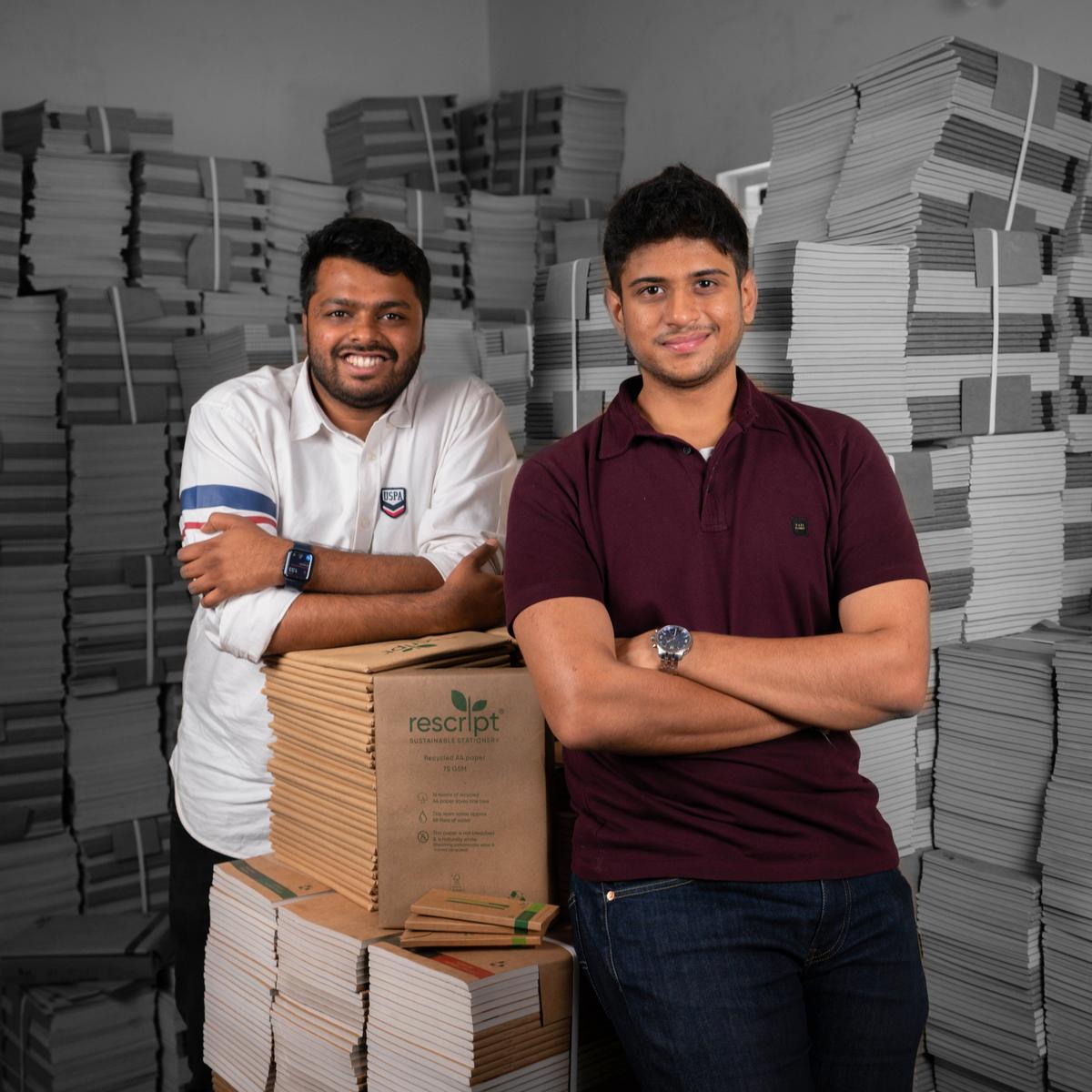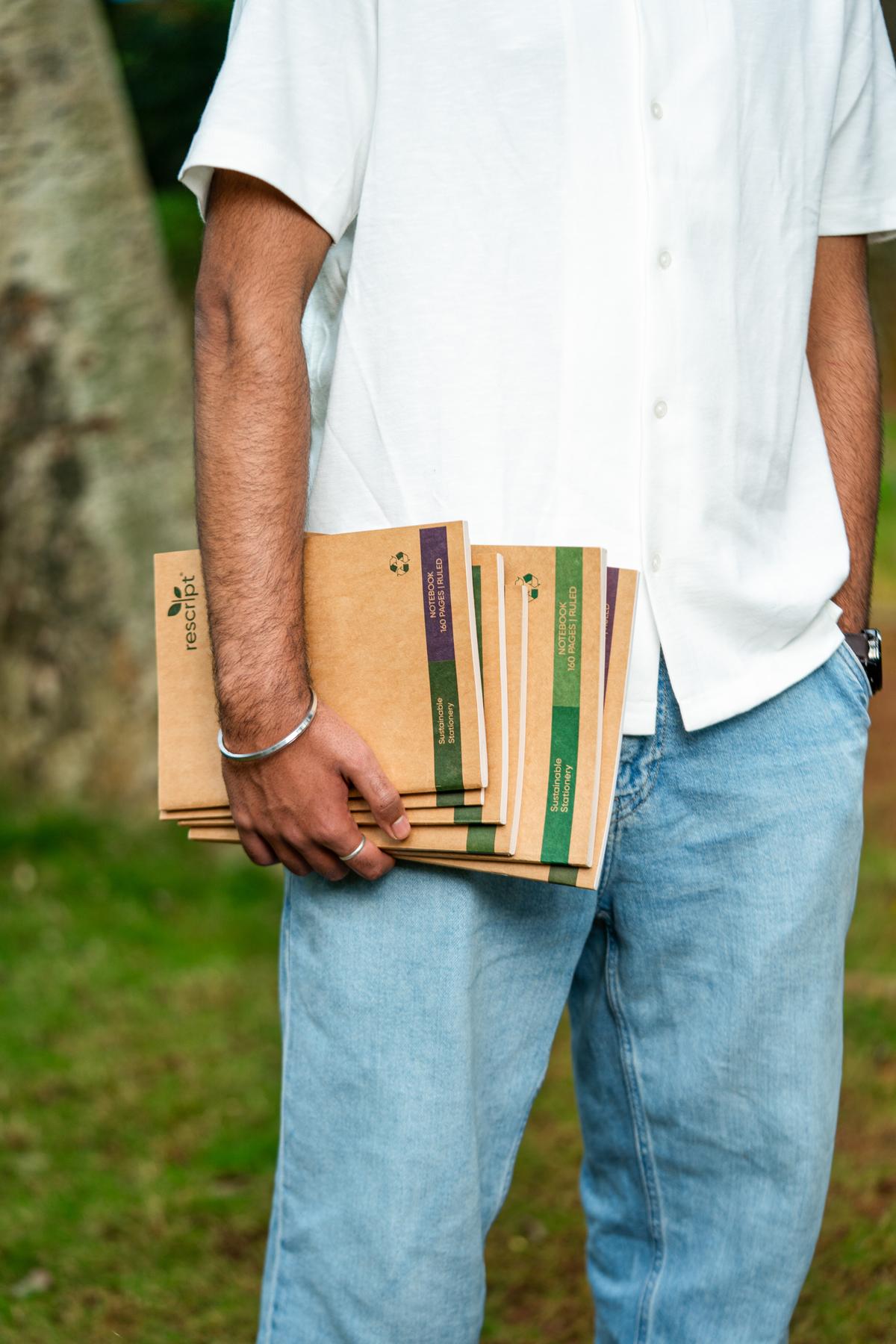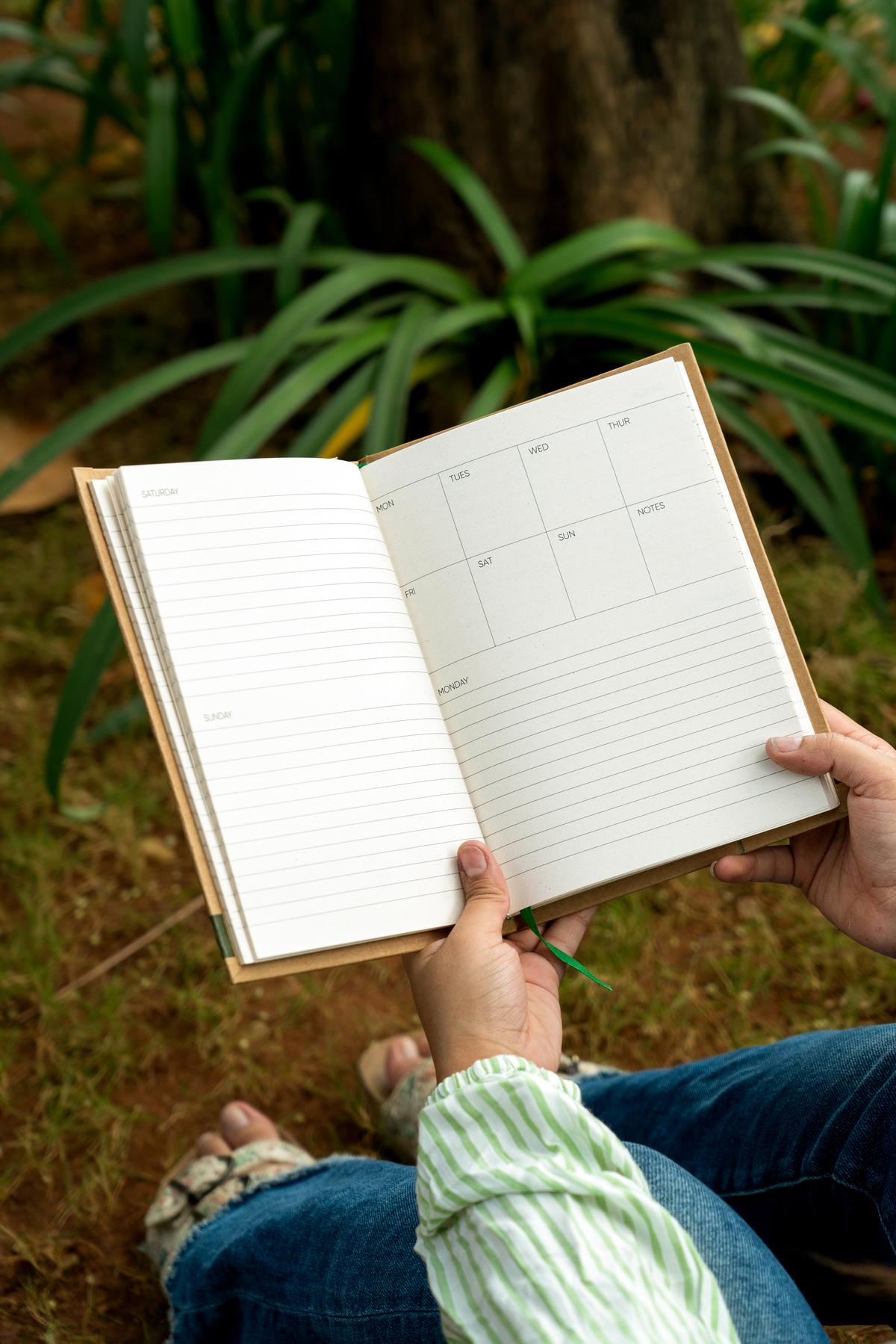At Rescript, recycled copier paper is turned into notebooks, journals, planners, pens, and pencils
| Photo Credit: Special Arrangement
The back-to-school season is here, and if you are clearing out bookshelves and study tables to make way for new books, there is a lot more you can do with last year’s notes. At Bengaluru’s Rescript, founders Naren Raj and Ashutosh Ananth have been retailing recycled copier paper and also turning it into notebooks, journals, planners, pens, and pencils.

Ashutosh Ananth (left) and Naren Raj
| Photo Credit:
Special Arrangement
Childhood friends-turned-entrepreneurs, the duo initially started off in 2019 by sourcing and selling plantable stationery like seed pens, pencils, and notebooks to corporates. “Over time, we realised these were largely treated as novelty or gifting items, and not as products for everyday use. That’s when we realised that regular stationery by itself needed a sustainable rethink,” says Ashutosh. This insight, adds Naren, led them to focus on an everyday essential, copier paper. They officially launched Rescript in 2021 and started making paper from a mix of pre-consumer (clean off-cuts from packaging units and book printers) and post-consumer paper waste (old newspapers, used school notebooks, and shredded office paper). Soon, they turned this into stationery products.

The paper is made from a mix of pre and post-consumer paper waste
| Photo Credit:
Special Arrangement
Elaborating on the process, Ashutosh says once the raw material is collected, it is sent to a mill where the paper is segregated, pulped with water, and turned into a fine slurry. This pulp is flattened on a conveyor, then pressed and heat-dried into large reels of paper. “These reels are either cut into A4, A3, and A5 sheets for copier paper, or sent for ruling and printing when we’re making notebooks and journals,” Ashutosh explains, “We’ve developed a proprietary formulation that carefully controls the ratio of recycled fibre to water during production. It’s one of the most important innovations we’ve introduced.” Which makes it smooth and compatible with modern printers.
A snapshot of the making process
| Photo Credit:
Special Arrangement
Naren adds that the paper is not “bright white” as bleaching agents are not used. “A few years ago, this was a point of hesitation for some people. Now, most see that natural tone as a sign that it’s genuinely recycled,” he says. Once the paper goes through a quality control check, it moves to the product finishing stage that includes binding, stitching, squaring, and spiral binding the products.

The paper is supplied to leading corporates
| Photo Credit:
Special Arrangement
Initially, the duo faced hurdles in introducing the product to the market, and also developing their own distribution networks. But today, they supply the paper and products to leading corporates such as LIC Housing Finance, ICICI Prudential, Featherlite, JP Morgan Chase, Swiggy, among others. “We’re open to working with educational institutions and individuals who want to send us their waste paper,” says Naren, adding that their notebooks are used in institutions like Mumbai’s Lodha International School, Tenbroeck Academy in Bengaluru, and Meridian in New Delhi.
If you would like to jump on their bandwagon and put your child’s used books or old stationery from your office to good use, this is a good place to start.
Details on rescript.in
Published – June 25, 2025 02:16 pm IST







